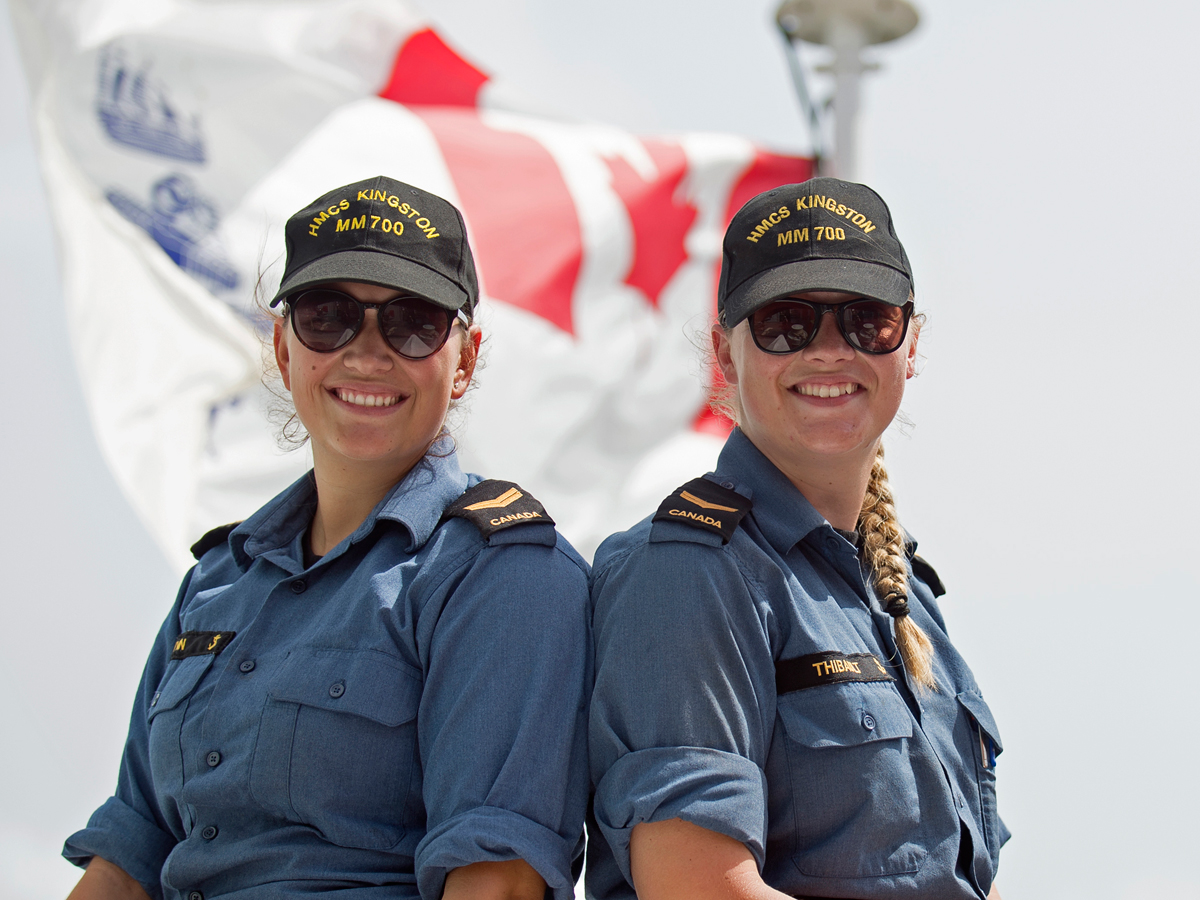Women in the Canadian Armed Forces
By Lookout Production on Jan 22, 2023 with Comments 0

Leading Seaman Justine Boivin (left) and Leading Seaman Alexy Thibault pose for a photo onboard HMCS Kingston before deployment in 2018. Photo: Sergeant Shilo Adamson, Canadian Forces Recruiting Group Headquarters.
Sailor Third Class Robyn Oliver
—
When I was growing up in Edmonton, Alta, my next-door neighbours were in the Canadian Armed Forces (CAF). As a child, watching them come home in their uniforms every day was equal parts intimidating and awe-inspiring. One of them was a woman.
One time, as my sister and I picked strawberries from her yard, she approached unnoticed and picked us up by our ankles. The moment, filled with giggling and sheer surprise, is a very wholesome memory. It was also a nod to her incredible physical strength. For lack of a better word, she was a total ‘badass’.
She was strong, kind, hard-working, and well-known throughout my neighbourhood. She was an Infantry Officer in the Army, a position typically held by men, especially at that time. But she kept up. She did just as many push-ups, lifted just as many sandbags, and outdid some of her coworkers in the number of pull-ups she could do. She was strong.
I joined the Royal Canadian Navy (RCN) two years ago, and am continually inspired by the awesome, hard-working women I work with. Women are now able to enroll in any position or trade in the CAF and RCN, but it wasn’t always that way.
Women originally served in nursing positions as civilians during the Northwest Rebellion in 1885. In 1942, female paramilitary groups were created. New divisions such as the Women’s Royal Canadian Army Corps (WRENs), Women’s Canadian Army Corps and Royal Canadian Air Force Women’s Division allowed women to serve and fulfill positions in the CAF. They were limited to jobs in medicine, administration, cooking, and cleaning – acceptable jobs for gender-specific roles. As the war continued, other positions became necessary to fill, including radar operators, laboratory technicians, and mechanics.
When the war ended, all three women’s branches were disbanded. In 1968, the CAF reorganized to allow women and men to serve in the same units. By the late 1980s, women could serve in any job or branch except on the submarines, until 2001. The Canadian Charter of Rights and Freedoms, adopted in 1992, was a great step for the CAF as it created further opportunities for women to make history. Women now make up around 16 per cent of the CAF and are working in all jobs as Commissioned and Non-Commissioned Members.
Continuing to promote and retain women in our organization is vital. We are driven to be here, whether it’s to serve our country, have job security, travel and see the world a bit, or try out a new career that we otherwise would not have the opportunity to. We are assets to the CAF, whether that be on land, at-sea or in the air.
Women have a great history in the CAF and I am proud to say that I have been a part of it. I’ve been inspired by women in the Canadian Armed Forces (CAF) since a young age, and I am grateful for those before me that have cleared the way for myself and the next generation of inspired women. I am proud to put on my uniform each day.
Filed Under: Top Stories
About the Author:





